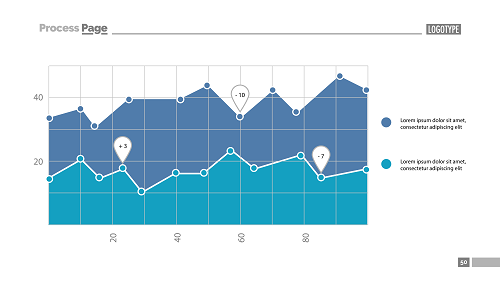You’ve collected your data. You know it’s clean, and you’ve done the analysis. But if you want your data to make an impact and be used effectively across the business, your work’s only just begun.
Because for other people to understand and use data correctly, you need more than just data collection and analysis.
As well as these two processes, data must be presented in a way that’s clear and intuitive. In other words: data visualisation. Straight away, your audience gets an immediate understanding of the data and key points, meaning your communications get way more effective.
Tip: If you want to learn more about the importance of data visualisation, check out our blog post.
Once you’ve cracked the foundations of displaying your data – like finding the right data visualisation tools and choosing the right chart for your needs – then you can start crafting some data storytelling magic.
This process creates connections within large amounts of useful data and then presents them via a story. This helps your audience understand your data (and your message) exactly – and ultimately, helps your company achieve its goals.
So, here are some best practices for organising and presenting data – so you get the best effect.
Preliminary considerations for effective data visualisation
Here are four key principles that’ll help you create effective and valuable data visualisations:
Choose the most appealing and appropriate chart type. It needs to highlight the value of the most important piece of data/insight you’re aiming to communicate.
Make sure your data is easy to read and understand.
Provide context (either text or visual format) within and alongside the data.
Make your charts, graphs, or diagrams as simple as possible.
And speaking of charts…
How to choose the right chart for your business
You’ve used, seen, and read these charts a million times throughout your career. But how much thought do you give to choosing them?
Let’s explore some common types of charts, graphs, and diagrams – and see what purposes they’re best suited to.
Line chart
A classic line chart (or line graph) shows the intersection of two dimensions, with a line illustrating trends over time.
Which – as you can guess – makes it perfect for showing trends across your business: from sales figures and requests for estimates to web page views.
It’s also a clear way to monitor multiple activities. For example, use a line chart to compare turnover at two or more sales points, within the same time period.
Area chart
An area chart is a variation on the line chart. The main difference is that it uses shaded or textured areas underneath the plotted lines on the graph. This filled area makes it really obvious how a particular trend is playing out.
Bar chart
Need to show comparisons? Then a bar chart’s for you. This graph is useful for comparing groups or categories while showing the values within a specific date range.
Pie chart
The pie chart: a real classic. This shows segmentation within a data collection, and analyses percentage distribution in any given category.
For example, if 100% equals your total number of customers, a pie chart helps to divide them into subsets by age, gender, profession, language, and so on.
Tag cloud
No list of data visualisation examples is complete without the tag cloud.
This is seriously helpful when you need to analyse large collections of qualitative or language-led data. For example, if you’re combing through online conversations to extrapolate commonly occurring subjects, you’ll want to show your results in a tag cloud.
Results are grouped into a word cloud: this highlights how often a subject occurs. It shows frequency, occurrence, categorisation, and how a given piece of data is similar to the rest of your data.
And it’s impactful. Imagine presenting the way your customers describe your brand or your customer support online – and seeing those key phrases pop up.
Data visualisation is the foundation of building a truly data-driven organisation. With real-time, actionable insights, you can accelerate intelligence, drive growth, and elevate customer experiences. It's what companies like Co-op are doing. And now you can too.










